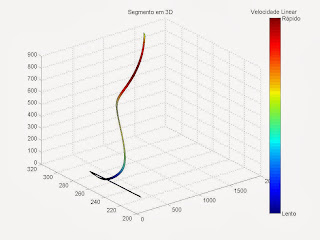The technique of Karate Mae Geri consists of a front kick commonly used in competitions Shiai Kumite and Kata for beginners and advanced athletes, configuring itself as one of the techniques most often used in the sport.
Because it is a technique that has both a great damaging power and little exposure to his executor, this technique has been adopted by other modalities besides the karate. Another great advantage of Mae Geri is the difficulty with which the blow is perceived by the adversary. This is primarily to its short runtime, compared to other kicking techniques. It is no surprise Mae Geri be the protagonist of great knockouts in the main fights of today.
Its importance in performance in combat makes the Mae Geri object of study, and Biomechanics has effective tools to unravel its secrets.
Most commonly the Mae Geri runs from "Zenkutsu Dachi", advanced stance, kicking with the leg that is behind. The hip moves from approximately 30° of extension and flexes to approximately 90° of flexion simultaneously to the flexion and extension of knee. The angular behavior of the hip and knee added to the linear movement of the whole body towards the target make up the chain that generates kinetic energy necessary for performance linear of the foot toward the target.
When it comes to official competitions of Karate, by rule, contact with the target should be brief and may result in penalties if this requirement is not met. Competitive regulation in fact creates a new way for implementing Mae Geri regarding the implementation of the same in order to knockout. When the goal is to produce the strongest possible impact should reach peak linear acceleration of the segment (foot) preferably at the instant of contact with the target. However, the need to control the impact force means that there is deceleration prior to contact with the target.
Thus, the performance is optimized by reducing the time between the peak acceleration and the contact with the target. To do so, is to decrease the deceleration time, it requires an increase in the braking ability of the movement. This braking capability is performed by the antagonist muscles of the movement, in which case, the phase that precedes the contact, is the flexor muscles of the knee. Temporal characteristics, amplitude and amplitude over time (rate increase) of the activation of these muscles are responsible for the control of this ballistic movement. We see then that it is necessary and very important control of the mechanism of muscle co-contraction for speed control performance.
Thus, the performance is optimized by reducing the time between the peak acceleration and the contact with the target. To do so, is to decrease the deceleration time, it requires an increase in the braking ability of the movement. This braking capability is performed by the antagonist muscles of the movement, in which case, the phase that precedes the contact, is the flexor muscles of the knee. Temporal characteristics, amplitude and amplitude over time (rate increase) of the activation of these muscles are responsible for the control of this ballistic movement. We see then that it is necessary and very important control of the mechanism of muscle co-contraction for speed control performance.
This is a preview of a research project being conducted at the Biomechanics Laboratory of UNESP - Rio Claro with high level athletes Karate. The research will mainly Biomechanical indicators that differentiate the high level Karate. These data are part of my PhD thesis, supervised by Prof. Dr. Mauro Gonçalves. The project also includes technical guidance and participation of Sensei Antonio Roberto Bendilatti. More information please contact us.
Big hug!








Olá
ReplyDeleteGostaria de maiores informações sobre o trabalho de análise biomecânica do mae-geri (chute frontal do karate). Estou desenvolvendo um projeto similar, e gostaria de contato com o autor do trabalho.
Poderiam por favor me informar o nome do autor? E como eu poderia ter acesso ao trabalho? Obrigado.
Atenciosamente,
Thiago Viana Camata
Prezado Thiago,
DeleteA análise biomecânica do mae geri fez parte de minha tese de doutorado: "Indicadores Biomecânicos do Karatê de Alto Nível".
Os dados referentes às análises estão em processo de publicação em periódicos científicos, porém podemos conversar sobre os resultados através de meu email: gbiomech@gmail.com
Atenciosamente,
Márcio F. Goethel
buenas noches,muy interesante el trabajo,tengo pensado algo parecido aunque no con artistas marciales de elite,me gustaria poder contactarlos y hablar!! gracias
ReplyDelete